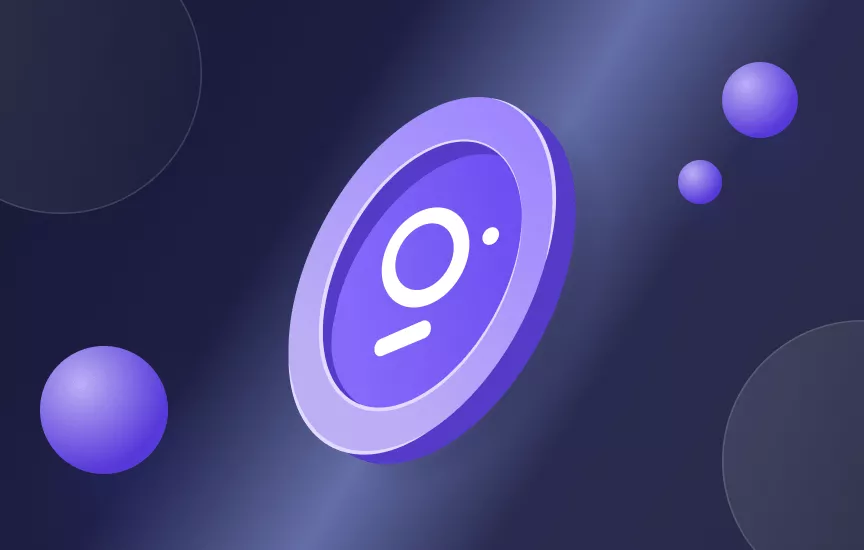Data usage and processing are inextricable components of all systems, software, and devices. When you think about Blockchain data and database management, the situation becomes more complex. Blockchain technology’s distributed database exchanges and stores data in a decentralized network of nodes, and accessing this distributed data is even more complex.
The Graph, a company founded in 2018 in San Francisco, USA, is a decentralized protocol for indexing and extracting data from the blockchain. In addition, the Graph is a solution that shows how to optimize access to databases.
What Is The Graph?
The Graph is a decentralized protocol that indexes and extracts data from blockchains such as Ethereum. In addition, it can be used to query hard-to-reach data directly.
The Graph provides blockchain data organization and simplified access. The network currently supports most of the most widely used applications in DeFi and the largest Web3 ecosystem. In addition, everyone can self-form and publish subgraphs, which are open APIs that applications can access using GraphQL.
Who Created The Graph?
In 2018, The Graph was formed by Yaniv Tal, Brandon Ramirez, and Yannis Polmann. Tal was motivated to create new dApps on Ethereum by his personal experience of how challenging it is to create new dApps. With his team, Yaniv Tal created The Graph with the idea of developing and launching the first decentralized indexing and querying app on the market, given that there was nothing like it on the market at the time.
How Does The Graph Work?
The Graph analyzes what to index and how to index it based on a description of the subgraph called the subgraph manifest. The subgraph manifest defines the smart contracts of interest to the subgraph, the events in those contracts that require attention, and how to map the event data into the data that The Graph will store in its database.
Once the node has collected all the information, three types of users can participate in organizing the data:
- Indexers: are node operators in The Graph who, using the Graph token (GRT), provide indexing and query processing services. An indexer receives payment for queries and rewards indexers for their services.
- Delegates: users who want to contribute to the security of the network but do not want to run the Graph Node themselves. Delegates contribute by delegating GRT to an existing indexer and receiving a portion of the query fees and indexing rewards.
- Curator: these are the subgraph developers, data consumers, or community members who tell the Indexer which Graph APIs to index.
- Consumer: This is the end-user of The Graph who accesses the subgraphs and pays for the query to the indexer, curator, and delegate. Consumers can be developers or projects that pay for their application queries, such as AWS or cloud services. The network scheme is focused on supporting delegates, indexers, and curators who provide curation and indexing services to consumers in exchange for GRT tokens. This gives market participants an incentive to improve APIs further and provide accurate data.
What Makes The Graph Unique?
The Graph is primarily a decentralized marketplace that solves dApp creation problems regarding indexing and ownership issues. It is also unique in that its goal is to provide easily accessible data to the consumers of The Graph network.
How Is the Graph Network Protected?
The protocol relies on indexers, curators, and delegators to maintain network functions and provide robust security. Indexers organize the management of nodes within a decentralized management model while competing to provide the best services in The Graph market and at the best prices.
In doing so, curators organize the collected data and sort it by relevance and validity, while delegators indirectly protect the network by reassigning their GRT crypto to indexers.
Where to Store The Graph Crypto Token?
The Graph (GRT) is an ERC-20 type token, indicating that GRT can be stored in any cryptocurrency wallet compatible with ETH and ERC-20 tokens. GRT holders can choose from a rich list of cryptocurrency wallets on the market, mobile, online, hardware, and desktop wallets.
Guarda offers the best solution for storing, buying, and selling GRT tokens. Storing your GRT tokens with the Guarda wallet provides a secure, high-level solution with convenient functionality. You can get Guarda wallet on all possible platforms, including Windows, Mac, Android, iOS, and browsers.
Conclusion
Instead of paying for and relying on centralized companies to store, calculate and manage the data required to keep an application running, users and developers can use The Graph to provide decentralization and be assured that the software they invest time and money in can’t suddenly disappear.
Many of the leading projects in the DeFi and Web3 ecosystem use The Graph, with most of them only starting to use it in 2020. When The Graph started this year, it had about 1,000 subgraphs deployed, and it has since grown to more than 3,400 subgraphs, including Uniswap, Synthetix, Decentraland, PoolTogether, Aragon, AAVE, and others.



